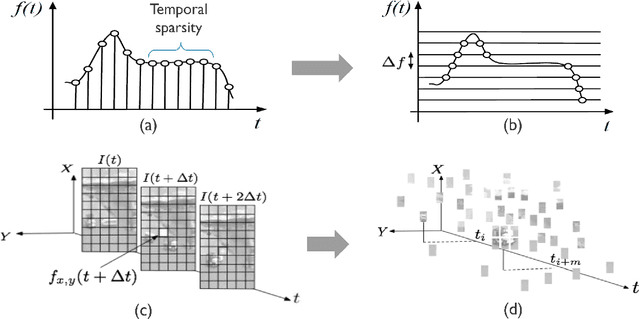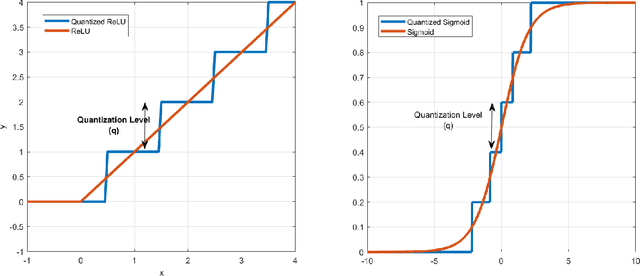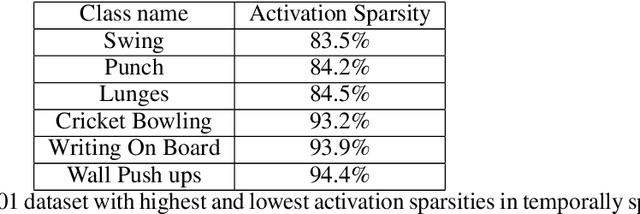Training for temporal sparsity in deep neural networks, application in video processing
Paper and Code
Jul 15, 2021



Activation sparsity improves compute efficiency and resource utilization in sparsity-aware neural network accelerators. As the predominant operation in DNNs is multiply-accumulate (MAC) of activations with weights to compute inner products, skipping operations where (at least) one of the two operands is zero can make inference more efficient in terms of latency and power. Spatial sparsification of activations is a popular topic in DNN literature and several methods have already been established to bias a DNN for it. On the other hand, temporal sparsity is an inherent feature of bio-inspired spiking neural networks (SNNs), which neuromorphic processing exploits for hardware efficiency. Introducing and exploiting spatio-temporal sparsity, is a topic much less explored in DNN literature, but in perfect resonance with the trend in DNN, to shift from static signal processing to more streaming signal processing. Towards this goal, in this paper we introduce a new DNN layer (called Delta Activation Layer), whose sole purpose is to promote temporal sparsity of activations during training. A Delta Activation Layer casts temporal sparsity into spatial activation sparsity to be exploited when performing sparse tensor multiplications in hardware. By employing delta inference and ``the usual'' spatial sparsification heuristics during training, the resulting model learns to exploit not only spatial but also temporal activation sparsity (for a given input data distribution). One may use the Delta Activation Layer either during vanilla training or during a refinement phase. We have implemented Delta Activation Layer as an extension of the standard Tensoflow-Keras library, and applied it to train deep neural networks on the Human Action Recognition (UCF101) dataset. We report an almost 3x improvement of activation sparsity, with recoverable loss of model accuracy after longer training.
 Add to Chrome
Add to Chrome Add to Firefox
Add to Firefox Add to Edge
Add to Edge